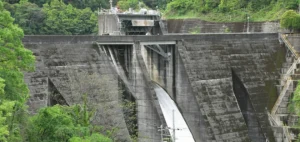After five years of intensive work, the first unit of the Nachtigal hydroelectric project was inaugurated on May 10, 2024. It marks a significant step towards strengthening Cameroon’s energy infrastructure. The ceremony was attended by Gaston Eloundou Essomba, Minister of Water and Energy, and Louis-Paul Motaze, Minister of Finance.
Regional Capabilities and Expansion
This first turbine, with a capacity of 60 MW, will supply the Southern Interconnected System (RIS), serving several major regions. Minister Essomba stressed the importance of this project in meeting the growing needs of Cameroon’s industries and households. In addition, plans are in place to export 100 MW of electricity to Chad by 2027.
Partner contributions and financing
The project is managed by the Nachtigal Hydro Power Company (NHPC), with participations from Électricité de France (EDF), the International Finance Corporation (IFC), the State of Cameroon, the Africa50 investment platform, and the French asset manager STOA Infra & Energy. These partners have mobilized 1.2 billion euros for this hydroelectric scheme. It includes a 1.455 km dam on the Sanaga River and a 3.3 km feeder canal, located 70 km from Yaoundé.
Future Impact and Sustainable Development
With a planned final capacity of 420 MW by December 2024, the Nachtigal hydropower plant will increase Cameroon’s electricity generation capacity by 30%. This development is crucial to the country’s energy future. It will provide a clean, sustainable source of energy while enhancing national energy security.
The inauguration of the first turbine at Nachtigal symbolizes a major step forward in Cameroon’s efforts to improve its energy autonomy and support its economic development. This project not only strengthens the national power grid, but also plans to position Cameroon as a key energy exporter in the region.






















